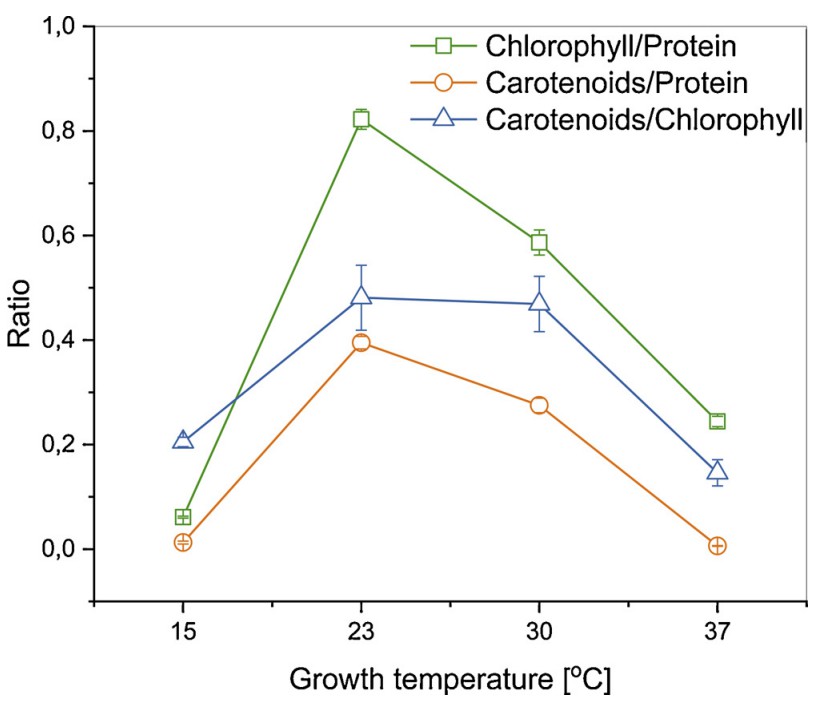Temperature Optimization Services for Algae Culture
As a parameter important for algae life processes, temperature plays a very important role in the cultivation of algae, as well as in the production of algae-related products.
Based on years of experience in algae cultivation, Lifeasible is able to provide professional and high-quality optimization services of temperature in algae culture.

Overview of Temperature as a Factor in Algae Culture
Temperature is one of the main abiotic parameters limiting the growth of algae in the natural environment, which can change the environment to induce damage to the organism. In general, there is an optimal growth temperature for each microalgal species. The optimal growth temperature allows the cells to photosynthesize without altering any inherent biochemical or physiological parameters.
For example, the temperature that offers the maximum growth rate is between 20-25°C for mesophilic species, but can be raised to 40°C for thermophilic strains (Chaetoceros, Anacystis nidulans) and lowered to 17°C for psychrophilic strains (Asterionella formosa). Chlorella species are known to have an optimal growth rate across a wide range of temperatures. A study of the growth rates of 17 different Chlorella strains with respect to optimal temperatures revealed that Chlorella species grow successfully between 26-36°C.
The Influence of Temperature on Algae Growth
- Below the Optimal Growth Temperature
Below the optimal growth temperature, an increase in temperature had a positive effect on photosynthesis and cell division. This trend is explained by an increase in the activity of enzymes associated with the Calvin cycle. The relationship between growth rate and the below-optimal temperature has been extensively studied and even modeled, most often by the Arrhenius equation. - Above the Optimal Growth Temperature
Appropriate high temperatures can increase the enzymatic activity of algae. In fact, when the optimal temperature is exceeded, photosynthesis, respiration and growth are reduced, therefore due to an imbalance between energy demand and ATP production and, to a greater extent, due to the inactivation or denaturation of the proteins participating in photosynthesis.
Temperature Gradient for Optimization Culture Condition
At the same optical density of 750 nm, the growth of Cyanobacteria Anabaena and the production concentration are inconsistent at four different temperatures, which include 15°C, 23°C, 30°C, and 37°C. Cell division of algae is most frequent at 23°C and 30°C, which is considerably slower at 15°C and 37°C. The highest concentrations of chlorophyll and carotenoids are found in cultures grown at 23 °C, whereas the protein concentrations are highest in cultures grown at 23 °C.
 Fig.2 Relative ratios of photosynthetic pigments to protein in Anabaena cells for 7 days. (Kłodawska, K., et al., 2019, Microbiological research)
Fig.2 Relative ratios of photosynthetic pigments to protein in Anabaena cells for 7 days. (Kłodawska, K., et al., 2019, Microbiological research)
Our Services
Lifeasible has professional devices to regulate and monitor the temperature of the algae culture process, with the ability to select and maintain the optimum temperature to increase production and total algae volume.

Why Choose Us

- Professional in Algae Culture
- Most Cost Effective in Industry
- Global Leader of Algae Culture Condition Optimization
Lifeasible is glad to share experience and technology about temperature optimization with you and help you screen for the best-fit algae culture temperature pattern. Please contact us for more information.
Reference
- Kłodawska, K., Bujas, A., Turos-Cabal, M., Żbik, P., Fu, P., & Malec, P. (2019). Effect of growth temperature on biosynthesis and accumulation of carotenoids in cyanobacterium Anabaena sp. PCC 7120 under diazotrophic conditions. Microbiological research, 226, 34–40.
Our services are for research use only and not for any clinical use.